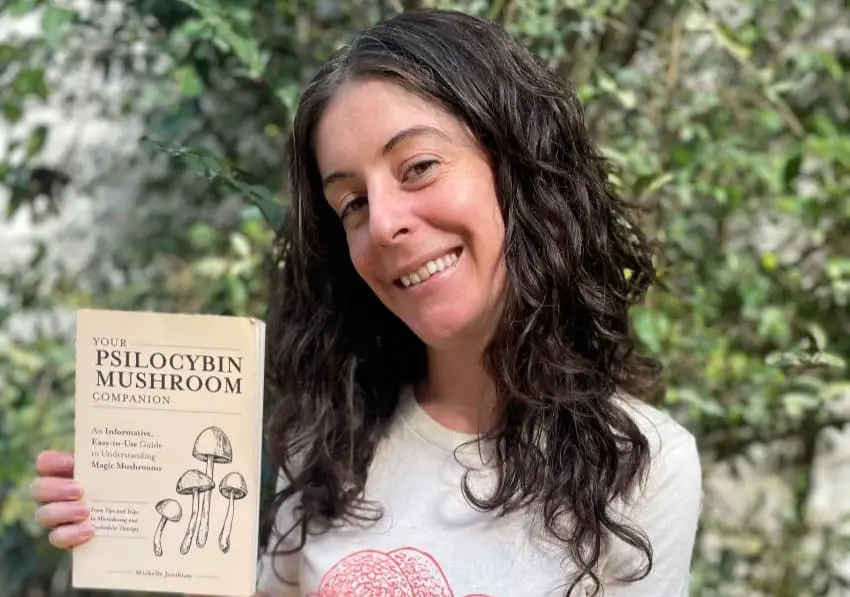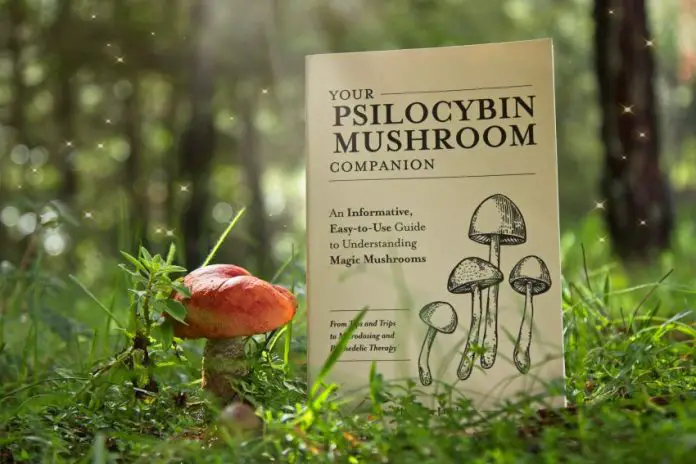The Indigenous Mazatec people of Oaxaca’s Sierra Mazateca have been using psilocybin mushrooms in healing rituals for generations. Pre-ritual traditions include only picking them during a full moon, taking lesser-known roads home to avoid bad encounters that could affect the mushrooms’ energy, always eating them in pairs to balance male and female energy and not looking at the mushrooms until it is time to eat them.
These are just a few of the fascinating facts in Michelle Janikian’s book, “Your Psilocybin Mushroom Companion.”

Based in San Cristóbal de las Casas, Chiapas, the author has been living and writing in Mexico for a decade, having fled to the country from New Jersey for a month after the sudden death of a close friend. “I came to grieve, slow down and recover — and I never left,” she explained.
Janikian arrived in the country with a background in journalism and an interest in psychedelics. The book — a must-read for anyone interested in psilocybin in Mexico — outlines her experiences with cannabis and mushrooms, and the history, culture and use of psilocybin mushrooms in Mexico.
Discovering psychedelic writing in Mexico
“Once I was here, I was looking for remote work, and writing in the cannabis space led to writing in the psychedelic space,” she explained.
Janikian wrote a few big pieces on the therapeutic benefits of psychedelics that caught the eye of a small publishing house, Ulysses Press, who got in touch and asked her to write a full-length guide to magic mushrooms.
Life in Mexico allows time and space to be creative
In Mexico, Janikian says, “I really had the time and space to be a writer. It’s hard to be a writer in America. The wages are really low, and the price of living is high, so a big part of my reason for living here for so long is to be a full-time artist and writer.”
She believes that being based in Mexico gave her the time and energy to bring the book to life.
As Janikian started the project, she suffered bouts of imposter syndrome, which she outlines in the book’s preface. “People take this subject seriously, and I felt like I’m just a journalist, not a shaman or a therapist; I’m not an expert. But through the course of it, I did become a subject matter expert, and now — four years after publication — I’m much more comfortable with it all,” she explained.
Janikian believes psilocybin should be accessible
The result is a fun, fascinating and educational read that’s less academic rumination and more like your close (and much more experienced) friend is whispering all the secrets of mushrooms into your ear. It’s full of memorable anecdotes, sensory descriptions and useful information perfect for informing your first — or next — psilocybin experience.
Janikian specifically aimed to make her book accessible since she was turned off by much of the existing literature in the field, which seemed condescending, whether from a medical perspective or a new-age mindset.
“I wrote what I would be looking for if I didn’t know anything about mushrooms, something easy to read, easy to digest and easy to understand while also outlining the power of the mushrooms. But it doesn’t need to be scary. I wanted to demystify it,” she said.
The book got a great reaction, and Janikian got many messages from people thanking her for explaining the complicated topic so well and giving them the confidence to proceed.
Indigenous relationships are an important part of psychedelics in Chiapas
Writing the book afforded her the opportunity to build on relationships with the Indigenous community that she’d already begun as a psychedelic journalist and, as outlined in some of the most memorable parts of the book, she was able to observe many of the Mazatec mushroom traditions firsthand and interview community members about experiences, traditions, beliefs and more.
“I speak Spanish and did everything respectfully. It takes a long time to build those relationships and make those contacts. I didn’t just show up and expect people to talk to me. I developed a rapport with people over the phone, over years, before finally going and staying with my source, who’s now also a good friend, and his family. He was an easy person to talk to because, while he is indigenous Mazatec, he’s also college-educated, a historian. His father was a filmmaker. He had a lot of access to the wider world and could relate easily in ways that not everyone can.”
But, she noted, care needs to be taken with these relationships since there’s a lot of sloppy journalism and exploitation. “I say no to a lot of psychedelic story requests. If they’re asking me for indigenous information, I tell them they should speak to actual indigenous people. They should go there and learn,” she explained.
For a few years after the book came out, she was writing a lot about psychedelics and became an editor for a psychedelic publication, but it didn’t bring her joy. “The psychedelic [writing] space is kinda broken. People want to make money and be famous, but they are basically doing the same thing as everyone else and putting people down. I felt like it was a toxic environment and didn’t suit me.”
Breaking new ground in an endless field
“It does feel like you’re on another plane, a portal somewhere else. It feels so significant. I can understand people saying they have spiritual experiences or speak to God on them. That’s not exactly been my experience, but I can see how it’s possible. It’s endless and fascinating. Even though the psychedelic industry didn’t fascinate me, mushrooms will always be a part of my heart,” Janikian says.
Today, she’s founded a creative agency with her British partner and is working on her first novel. She uses mushrooms maybe once a year as a way to allow her to step back, learn about herself and see things more clearly.
“There is no right or wrong way to do this. People should explore what other people do, which was the point of the book, and then make their own decisions on what would work for them.”
Janikian came to Mexico to grieve but discovered a life here. She built relationships that will last a lifetime and created an informative and respected guide to a unique facet of the country’s culture that continues to demystify psychedelic mushrooms and allow readers to make informed decisions about their use.
Disclaimer: This article is for informational purposes only and should not be considered legal or medical advice. The writer and Mexico News Daily assumes no responsibility or liability for any errors or omissions in the content on this site. Individuals should always consult with qualified professionals regarding the use of DMT or any other substance for medical purposes, as well as consider their jurisdiction’s applicable laws and regulations.
Laurel is a nomadic lifestyle journalist whose favorite stories focus on weird and wonderful travel and culture. Her work has appeared in The Wall Street Journal, Vice, BBC Travel, Travel + Leisure, South China Morning Post, The Culture Trip and more. @laureltuohy, www.laureltuohy.com
